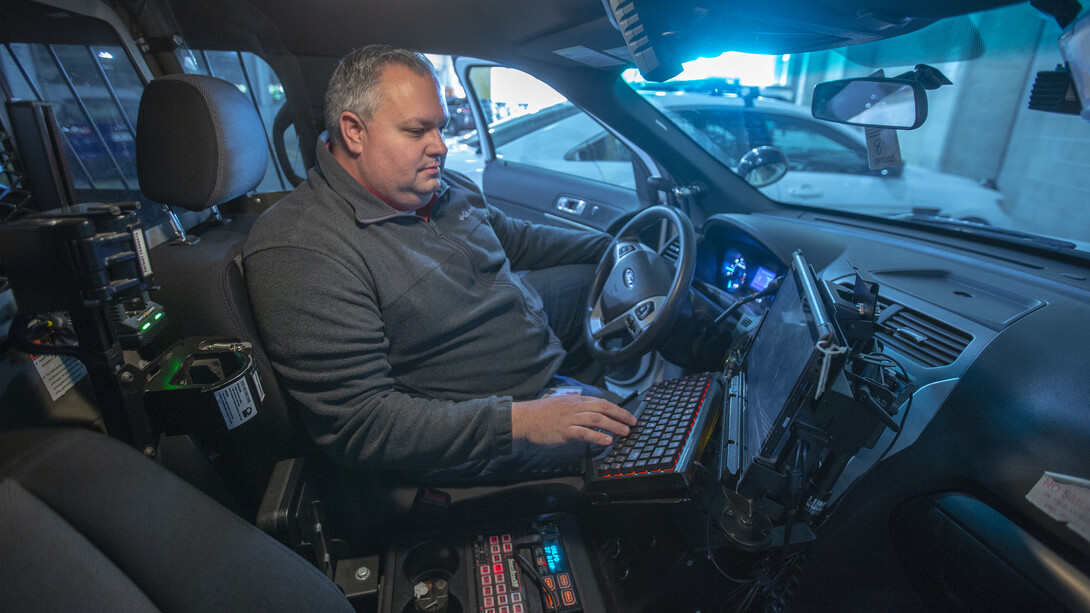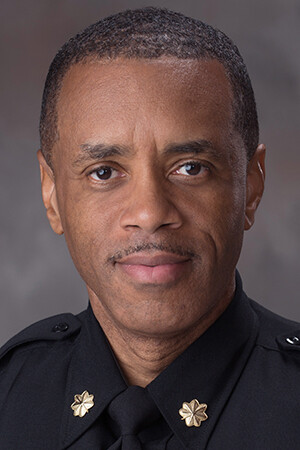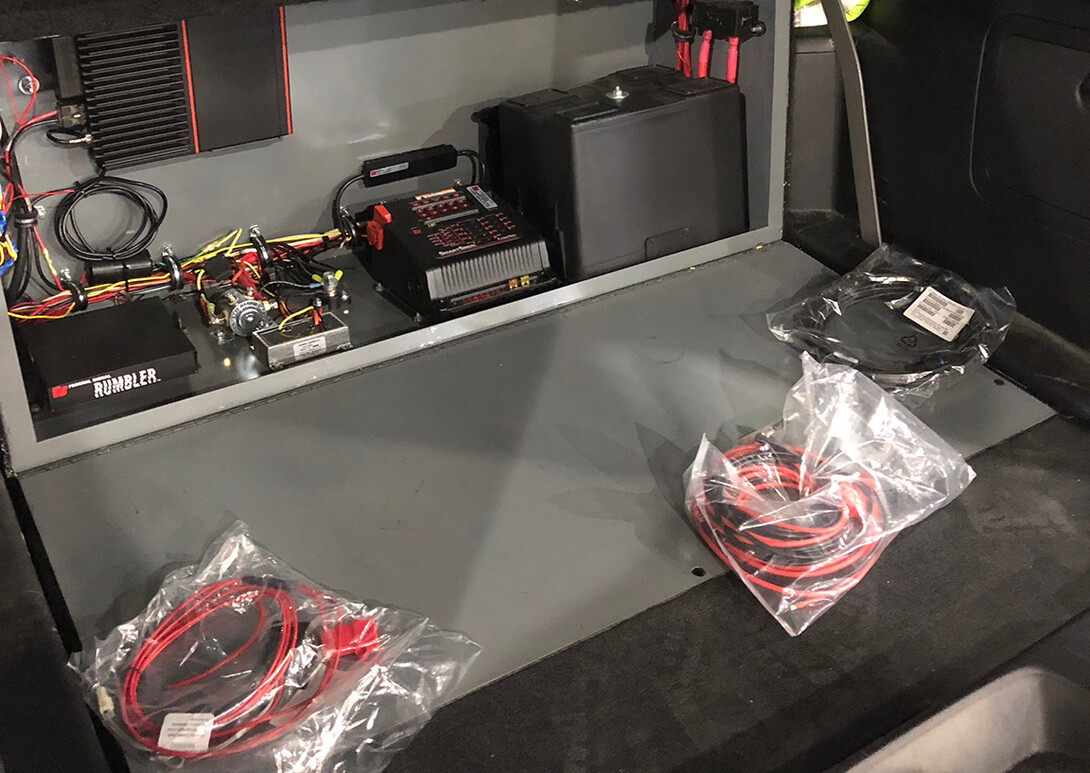
On his first patrol across campus, Nebraska’s Douglas Petersen counted a pen and notebook among necessary law enforcement tools.
While still useful today, the effectiveness of pen and paper are enhanced through an array of law enforcement technologies that range from portable tablet computers and HD body cameras, to location-providing smartphones and fire/life safety electronic access keys.

“We’ve definitely come a long way since the days of notebooks and pens,” said Hassan Ramzah, assistant chief in the University Police Department. “Law enforcement information technologies help us provide a higher quality of service to the university community. And, the dedicated work of our own information technology team is why we’re able to use these technologies effectively.”
It’s week four of six in the University Police Department’s Citizens’ Police Academy and the focus is on information technology support and a behind-scenes look at game day security in Memorial Stadium. Organized by University Police, the inaugural academy is designed to educate a 12-person cadre of student, faculty and staff volunteers about law enforcement activities on campus.
Melding of skills
The eight-member information technology team imbedded with the University of Nebraska–Lincoln police department is managed by Sean Humphrey.
Hailing from a law enforcement family and a one-time patrolman in the Lincoln Police Department, Humphrey has found a passion working in the information technology side of policing.
“This is really a marrying of my two interests in law enforcement and technology,” Humphrey said. “To be involved with the IT side of the police department and have the benefits of being part of a larger, collaborative IT team across the university is really my dream job.”
The UPD information technology team is responsible for six primary areas: police/dispatch tech and support — including 140 computers, from desktops to mobile tablets; development of records management software (including for the University of Nebraska at Omaha); more than 3,000 campus security cameras; building access via more than 2,800 doors; managing software systems that control door access; and maintaining a global information system that provides instantaneous details of items stored within research labs to the location of utilities that feed individual campus buildings (also for UNO).
All members of the UPD’s information technology team go through the same background checks as police officers and dispatchers. They provide 24-hour tech support to UPD and collaborate with local first responder IT groups, including Lincoln Police Department, Lancaster County Sheriff’s Office, City of Lincoln and Nebraska State Patrol.

The team has established a wi-fi-aided system that automatically uploads video when department cruisers are parked in UPD’s designated 17th and R Street parking garage spaces. They also recently led an upgrade to HD body cameras and have started work that will allow the department to meet a new national standard that replaces traditional citations with printed tickets.
“After the first of the year, we will be introducing the e-ticket system,” Humphrey said. “As we operate within the same court system, we are working with the Lincoln Police Department and Lancaster County Sheriff’s Office for this transition.”
The printers will be similar to designs used to issue parking tickets. Humphrey said the final design will be larger — accommodating the federally regulated eight-and-a-half by 11-inch citations — but rugged enough to be portable for use within campus residence halls and other locations.
“Our goal is to find balance when we roll out new or update existing technologies,” Humphrey said. “We always want to be moving forward, pushing boundaries so our technologies are cutting edge, providing necessary enhancements to law enforcement duties while also not frustrating our officers.
“The work our team does is challenging, but extremely rewarding as we know it helps make the campus safe for everyone.”

Stadium walkthrough
The fourth week of UPD’s Citizens’ Police Academy ended with a discussion about security operations, a tour of Memorial Stadium and behind-the-scenes look at security protocols integrated into Husker football games. The tour included a final stop in a nondescript room within the stadium that functions as the heart of law enforcement/first responder activities during games.
Access to the stadium security room is limited and UPD administrators requested no photos be taken of the space. The room is loaded with technology — including access to cameras that can zoom in on each of the 90,000 seats within the stadium. The space is also designed to function as the university’s backup dispatch center if necessary.
“This room provides us a wealth of knowledge at a glance, helping better direct first responders during games and other events,” UPD Captain John Backer said. “We take pride in knowing that our game day procedures and systems are used as models for other institutions and agencies.”








